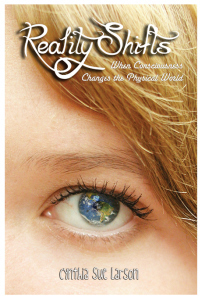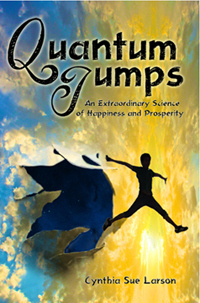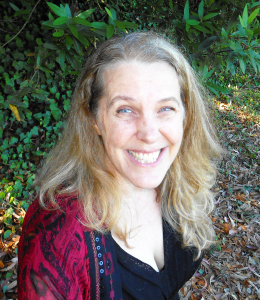Cynthia Sue Larson's Blog, page 14
February 3, 2015
Know the Full Possibility of You
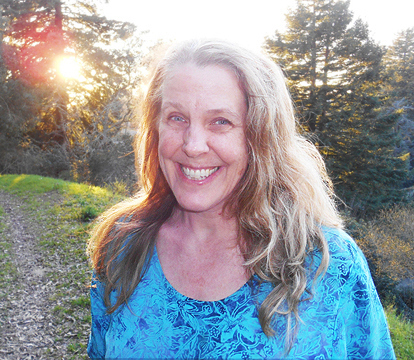 ” It is wisdom to know others;
” It is wisdom to know others;
It is enlightenment to know one’s self.”
��� Lao Tzu
Who are you?
The first time someone asked you, “Who are you?” you might reply by saying your name. If someone asked, “Who are you?” a second time, you might state your job title, in order to provide information that helps to set you apart and explain your relationship to others.
If I was asked, “Who are you?” on a college campus, I���d likely mention that I am an alumna, or mention that I have a degree in Physics from UC Berkeley. If asked this question at an airport in France, I���d mention that I���m an American citizen who lives in California. When asked this question on a TV interview, I���d say I���m a best-selling author of the books, Quantum Jumps and��Reality Shifts. If asked this question by a meditation master, I���d reply, “awareness.” While each of my answers could be considered accurate and true, a good case could also be made that none of these descriptions is who Ireally am���since there is more to me than just my name, job title, citizenship, and other descriptors. And based on what I have learned about the way we exist in a superposition of states���as can be seen in the doubling of the efficacy of the placebo effect over the past thirty years���I am aware of the importance of keeping a positive, open mind to considering myself to be doing better than how any given label or description might seemingly confine me.
One of the things we most take for granted is knowing who we are���yet this is one of the biggest areas in which we have room to increase our understanding of what is possible in our lives. People sometimes discover that they can do things they didn’t think possible���when circumstances require them to handle situations they’ve never previously faced. In an emergency, people have been known to be able to perform amazing feats of courage and strength, such as lifting a heavy car off of someone else. When some people have transformative life experiences, they often realize there is nothing holding them back from pursuing the life of their dreams, seeking out new kinds of friends, activities, and work.
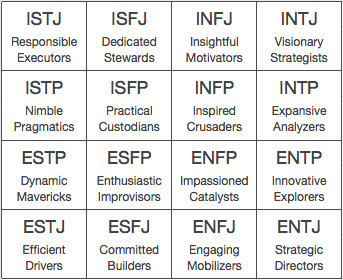
Some employers administer personality tests, such as the Myers-Briggs Type Indicator (MBTI) in hopes of establishing a better fit between applicants and job openings. The idea is that such tests can help sort out tendencies people have toward being an introvert or extrovert, senser or intuitive, thinker or feeler, and judger or perceiver��� providing us with clues as to how people with shared personality characteristics tend to respond to various situations. As tempting as it might be to get your MBTI score and think, “At last I know who I am! I am a ______,” filling in blank with one of the sixteen MBTI personality types, such as ���INFJ” for example, for “Introverted Intuitive Feeling Judger”, psychologists are finding that people can sometimes move around from personality type to personality type, such as becoming more extroverted.
One very important quality that personality tests don’t describe is what level of consciousness you are accessing at any particular moment. Such levels include: waking, dreaming, deep sleep, and a sense of oneness awareness���with transitional levels in between. Some yogis and martial artists are capable of developing the ability through meditation and internal energy work of changing their level of consciousness, allowing them to interact with their environment with harmonious grace and ease. While we move between these levels of consciousness on a regular basis, we seldom give much thought to how we engage with these levels of consciousness, or who and what we���re connecting with while we���re dreaming or daydreaming, for example. What scientists can measure is that they associate some of these stages of consciousness with brain waves, with the lowest stages of unconsciousness corresponding with Delta brainwaves in the 0.5 to 4 Hz frequency range, and Theta brainwaves in the 4 to 8 Hz range. We consider ordinary waking consciousness to correspond with Alpha brainwaves between 8 to 13 Hz, and Beta brainwaves between 13 to 30 Hz. Gamma brainwaves at 30 to 42 Hz, are associated with extreme abilities to focus, and high states of ecstasy.
The question of who you are takes on tremendous importance at this point in history���the dawning of the Quantum Age. Due to the required inclusion of a conscious observer at the heart of quantum physics, it���s no longer possible for scientists to assume such things as that there can be a purely objective observer. In actuality, observers are known to influence every observation they make, simply by their presence and what the observer is paying attention to.��And how we pay attention to ourselves can make a tremendous difference in our health, happiness, and wellbeing.
When I ask myself the question, ���Who are you?��� I discover I am aware of myself on many levels of being. I realize that I am much more than simply my gender, my age, my profession, my experiences, and my socio-economic information. I am much more than my types of expertise. I am more than my skills, more than my hobbies, more than my bank balance. I���m more than my nationality, more than my college degrees, and more than any other types of certifications I���ve received. There are levels of ���me��� that can be subsets of my body���such as ���being in my head��� and thinking about ideas like these. There are levels of my being that are aware of living my life for love, with tremendous heart-centeredness. There are also levels of ���me��� that include many possible superpositions of states of me���some that I���m more aware of than others. And there are levels of ���me��� based on awareness of my being entangled with and part of much more than my physical body right here, right now. With so many different answers to who I am, I���m glad to discover that the less limited and the more expansive I am with my answer to the question, ���Who are you?��� the more enjoyable and fulfilling my life becomes.
The video version of this blog post can be found on YouTube at:��http://youtu.be/bPHVWDo91jk
___________________________
Cynthia Sue Larson is the best-selling author of six books, including Quantum Jumps.��Cynthia has a degree in Physics from UC Berkeley, and discusses consciousness and quantum physics on numerous shows including the History Channel, Coast to Coast AM, and BBC. You can subscribe to Cynthia���s free monthly ezine at: http://www.RealityShifters.com
RealityShifters��

January 27, 2015
Cynthia Sue Larson Interviews Stuart Hameroff
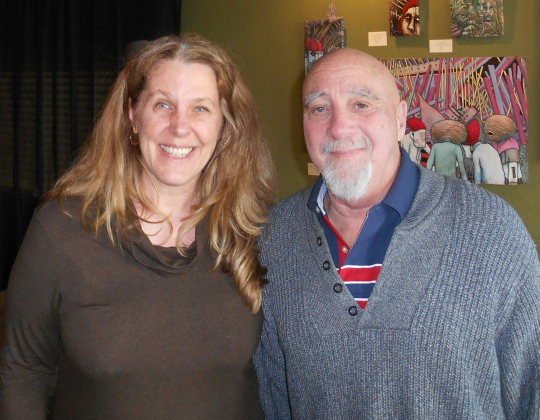
Cynthia Sue Larson with Dr. Stuart Hameroff
I talked with��Stuart Hameroff this month about his ideas about quantum physics and consciousness. Dr Hameroff is a clinical anesthesiologist and Director of the��Center for Consciousness Studies at the University of Arizona, and lead organizer of the Toward a Science of Consciousness conferences that began��in Tucson, Arizona in 1994.
Stuart Hameroff’s��research involves a theory of consciousness developed over the past 20 years with British physicist Sir Roger Penrose. Their��Orchestrated Objective Reduction (���Orch OR���) theory suggests that consciousness arises from quantum vibrations in protein polymers called microtubules inside the brain���s neurons.����For a review, along with critical commentaries and replies, see:��http://www.sciencedirect.com/science/article/pii/S1571064513001188
Hameroff and Penrose suggest these vibrations compute, collapse, interfere and resonate, regulating neuronal processes and connecting to the fundamental level of the universe, providing moments of conscious experience and choice.
________________________
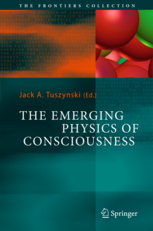 CYNTHIA:��Some scientists point out that��the brain is basically dissipative, essentially, that it���s not isolated. Would you agree with that?
CYNTHIA:��Some scientists point out that��the brain is basically dissipative, essentially, that it���s not isolated. Would you agree with that?
STUART:��I think that the brain is a little bit more clever, that there are alternating phases of isolated/quantum and dissipative/classical processing. Quantum and classical, quantum and classical, quantum and classical. The classical is dissipative and interacts with the environment, bringing information in and letting information out, exerting causal efficacy in the world. But classical phases alternate with quantum phases at EEG frequencies, for example, at 40 Hz. Or maybe even faster, at megahertz. So for 40 Hz, that would imply every twenty-five milliseconds there is a cycle of quantum processing followed by collapse, a classical result that interacts with the outside world. In this classical phase information comes in and that���s when it���s dissipative, and then the cycle repeats. So you have a quantum phase that���s isolated, then an open phase that���s dissipative and brings information in, and then another quantum phase, so on in alternating phases. I think consciousness consists of sequences of these alternating phases, the end of each quantum phase a discrete event. Consciousness is a sequence of discrete events, not a continuum. A movie appears continuous to us, but it���s actually a sequence of frames; I think consciousness is like that, and these frames alternate, quantum and classical.
CYNTHIA:��I love your theory, which is about the best one I���ve seen for bringing that together. When we look in the brain, would you say we see evidence of this quantum logic happening? You might say that we do?
STUART:��As far as quantum logic, specifically, I think that you see that in dreams.��I think dreams are quantum information without collapse���you stay in the quantum phase, without the dissipative phase. If there���s a loud noise, you wake up, so you���re shielded, isolated. Except for sleepwalkers, or something like that.
CYNTHIA:��And lucid dreaming is interesting.
STUART:��Lucid dreaming, exactly.
CYNTHIA:��In that case, maybe, would there be alternation?
STUART:��Lucid dreaming, I have to think about that. Probably there���s some collapse, but maybe infrequent, or not total, or something like that. I���m not sure. That���s certainly an exception to the rule. Sleepwalking and lucid dreaming are special cases. ��Matte Blanco described the logic of dreams��which is��very similar to quantum logic.
CYNTHIA:��You can find the extremes there, but they come together.
STUART:��Well the big issue in quantum logic is noncommutativity. In regular logic, A times B equals B times A, but in quantum logic, A times B is not equal to B times A. Paradox reigns. Opposites co-exist.
CYNTHIA:��Right!
STUART:��Irreversible steps are one of the keys.
CYNTHIA:��In addition to the irreversible steps, some people have noticed that quantum logic is a little bit like four-fold logic���so-called ���Asian logic������because it does have True, False, True-and-False, and Not-True-Not-False.
STUART:��Yeah, superposition, quantum superposition. Or as Stuart Kaufman talks about, Aristotle���s ���excluded middle��� actually occurs in quantum logic.
CYNTHIA:��Would you say that quantum logic feels like an equal partner to classical logic, or do you feel it���s more of the primarily logic that is constantly there? This gets to what you were noticing about the brain.
STUART:��I think the logic of the quantum world underlies the classical world���but then when collapse occurs���you get the classical world. I believe in collapse, but quantum field theorists don���t necessarily agree with collapse. And then you have Henry Stapp���s view, that collapse is caused by the Cosmic Mind.��I don���t think that solves the problem. That puts consciousness out there, kind of outside of science, so it���s really a spiritual, religious type of approach. But I think you can get spirituality out of collapse, with non-locality and Platonic values, which is what Penrose brought in.
CYNTHIA:��I love the way you bring up protoconsciousness, the Planck scale, and the way consciousness might exist in that sort of decoherent state, but at the same time, you do look to consciousness to bring about collapse.
STUART:��Roger Penrose essentially replaced decoherence with self collapse, what he called ���objective reduction���. Decoherence is kind of an ill-defined thing anyway. Nobody can really say exactly what it is. Plus it doesn���t really get rid of the quantum superposition���just buries it in noise. So Roger came up with the idea that there is this objective threshold for reduction, related to the uncertainty principle, so every superposition will reach this threshold, and have a self collapse. Now normally, that occurs in a very charged, polar environment, like in this table, or in the air, or liquids. So the charge will entangle with another charge, the simple equation is: E = h/t, where E is the amount of superposition, h is Planck���s constant, and t is the time at which self collapse occurs by OR. So the larger the E, the faster the t. Roger then also said that when OR happens, there is a moment of subjective experience.
CYNTHIA:��OK.
STUART:��Now normally, if that happens in a polar environment, then it���s random, and it���s going to happen very quickly, but randomly, so the moment of conscious experience won���t have any cognition. That���s what we call protoconscious moments, random, non-cognitive and inconsequential���but still experience. There���s consciousness everywhere, but it doesn���t hang together and do anything meaningful.
CYNTHIA:��That could explain, perhaps, why plants can photosynthesize using that quantum random walk, because on some level, they���ve got protoconsciousness.
STUART:��Yeah, photosynthesis is a really interesting thing. I was talking about this yesterday with these guys down at Stanford. Does that collapse? That���s a good question. The problem is that, by e=h/t, if it���s just electrons, electrons have very little mass, so e is going to be very, very small. So it will take a lot of electrons to reach collapse.
CYNTHIA:��Right.
STUART:��Everything has proto-conscious moments. But in the brain, and specifically due to structures called microtubules inside neurons, the random entanglements are avoided during quantum isolation phases, and the quantum states are organized, or ���orchestrated��� by memory, sensory inputs and resonances, and cognitive ���orchestrated��� OR conscious moments occur. But plants have photosynthesis which uses electron quantum coherence but probably don’t have orchestrated OR and meaningful consciousness. The problem is that by E=h/t, electrons comprising E have very little mass, so E is going to be very, very small, and t very, very long. So plants might have meaningful conscious moments but very rarely.
CYNTHIA:��Right.
STUART:��But the quantum movements of electron excitations in plant proteins which enables highly efficient conversion to food is similar to what happens in microtubule proteins. You have these aromatic rings, kind of like benzene and phenyl rings, which have excitons and dipole states. These are the same molecules that are in psychedelics, dopamine and psychoactive drugs and neurotransmitters. And that type of environment is non-polar, so there���s no charge. There are induced dipoles, but no net charge. So the quantum states there don���t automatically and quickly entangle with the environment and collapse. They can persist and couple with other quantum states to interact cognitively and process information. Or in the case of photosynthesis, transfer energy.
CYNTHIA: This coupling with other quantum states is really interesting, and brings me to the core of something I���ve been looking at,��which is levels of consciousness. When we ask this big question, ���Who are we?��� and ���Who is the observer?��� we tend to have a human bias, of course, because this is how we see the world. But obviously, people who meditate are able to focus very closely in on one particular system within themselves, such as their breathing, their heart rate, these kind of things. So it���s something that we have the ability���at least yogi masters do���through meditation and awareness of themselves���to change that kind of level of consciousness. This to me is the key.
STUART:��Yes, levels of consciousness. If you go back to E=h/t, these protoconscious events are happening in the table, in the air, in the coffee cup all the time. It���s basically the same as decoherence, except there is this little snippet of protoconscious experience that���s happening everywhere. So that seems bizarre and crazy, but on the other hand you have people���panpsychists���now saying that everything���s conscious, without any clue as to what actually that might mean. But then, if you get into a non-polar environment, you avoid the random entanglements, and have cognition and meaningful consciousness. In other words, the quantum states are orchestrated.��It���s like the difference between the sounds and tones of an orchestra warming up, and the orchestra playing a symphony.
CYNTHIA:��Exactly.
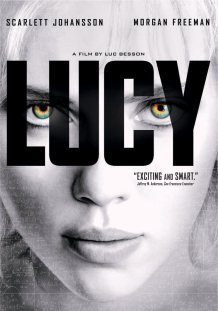 STUART:��So the orchestra warming up with the various isolated tones and notes is like protoconscious moments here and there. And then they start playing Beethoven, because it���s all orchestrated, and that���s music. It���s a very good analogy, the musical analogy, except with music you need a listener, whereas here, the vibrations are self-aware. So when you start to orchestrate the objective reduction events, you get cognition and consciousness. And then it���s a matter of the intensity of the levels. So for example, assuming it���s orchestrated, and you have meaningful consciousness, then as ���E��� becomes larger, ���t��� becomes shorter, and you get more intense conscious experience, like music changing to a higher octave. As E is larger, you use more of the brain. Did you see that movie, ���Lucy���?
STUART:��So the orchestra warming up with the various isolated tones and notes is like protoconscious moments here and there. And then they start playing Beethoven, because it���s all orchestrated, and that���s music. It���s a very good analogy, the musical analogy, except with music you need a listener, whereas here, the vibrations are self-aware. So when you start to orchestrate the objective reduction events, you get cognition and consciousness. And then it���s a matter of the intensity of the levels. So for example, assuming it���s orchestrated, and you have meaningful consciousness, then as ���E��� becomes larger, ���t��� becomes shorter, and you get more intense conscious experience, like music changing to a higher octave. As E is larger, you use more of the brain. Did you see that movie, ���Lucy���?
CYNTHIA:��Yes!
STUART:��It���s about how we use some percentage of the brain, and Lucy was using more and more percentage of her brain. And how they were saying she was doing it wasn���t right.
CYNTHIA:��It was fanciful.
STUART:��Nobody really knows. Based on available technology they tell us we only use a small fraction of our brain. Well, bullshit! How do you know how much of our brain we use?��We may use a lot of it for stuff that���s not conscious, or that is conscious and cant be measured, like quantum effects in microtubules. But just for consciousness, I think if you���re meditating or if you���re in an altered state or something like that, that means you���re using more and more of your brain that is involved. Therefore, ���E��� becomes greater and ���t��� is faster, so you get faster, more frequent, conscious events. You go to a deeper level which is a higher plane. It���s been shown that meditators have�� higher frequency gamma synchrony, for example, but it could go even faster, like to megahertz, for example. So we could be having ten million of these events per second. But then you���d say, ���Wait a second. For EEG, our cognition is much, much slower.��� What Roger and I proposed in��our last paper��is that these faster events interfere and give beats, just like in music, when you have beat frequencies.��And the beat frequencies are what we see���the EEG. The beat frequency that we see is cognitive windows in the range of milliseconds. But they are actually deriving from faster vibrations, like in megahertz, which is where the microtubules are vibrating. So there���s a spectrum of terahertz, gigahertz, megahertz, kilohertz, and then hertz. And the EEG is basically hertz. So what we see as EEG I think of as beat frequencies of faster vibrations at a deeper level. EEG is the slower, large scale tip of an iceberg of deeper, faster vibrations. So if you���re meditating, or you go in an altered state, you���re going into that faster, more intense domain. So it will include more conscious moments per second, and they are more intense. So that���s what I think an altered state is, a deeper level, higher frequency level of consciousness���it���s the frequency at which you’re having orchestrated conscious events, more deeply into spacetime geometry. Very intense experiences may be entirely in spacetime geometry, and could exist independent of the brain, at least temporarily, remaining entangled. So this could explain out-of-body experiences. As the Beatles said ��� ���The deeper you go, the higher you fly���.���
��___________________________
Dr. Stuart Hameroff��
http://www.quantumconsciousness.org
Center for Consciousness Studies
http://www.consciousness.arizona.edu
Consciousness in the Universe: A Review of the ‘Orch OR’ Theory
by Stuart Hameroff and Roger Penrose
http://www.sciencedirect.com/science/article/pii/S1571064513001188/
___________________________
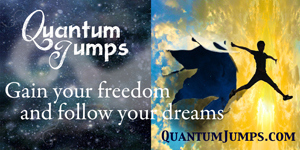
Cynthia Sue Larson is the best-selling author of six books, including Quantum Jumps.��Cynthia has a degree in Physics from UC Berkeley, and discusses consciousness and quantum physics on numerous shows including the History Channel, Coast to Coast AM, and BBC. You can subscribe to Cynthia���s free monthly ezine at: http://www.RealityShifters.com
RealityShifters��

January 1, 2015
This Year, Resolve to Become Who You Truly Are
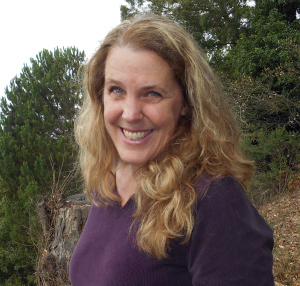
Cynthia Sue LarsonI
There was a time when higher education��could be counted on to be��a truly transformative experience, in which it was possible for one’s sense of identity to be broken down before being built back up again with a fresh new sense of connection, meaning, and purpose in the world. This idea was beautifully demonstrated in Robin Williams’ film, Dead Poets Society, where he played an English teacher who instructed his students to rip out the introductory pages to their poetry books that contain mathematical rating systems for evaluating prose. Teacher John Keating (played by Robin Williams) says to his class:
Excrement. That’s what I think of Mr. J. Evans Pritchard. We’re not laying pipe, we’re talking about poetry. How can you describe poetry like American Bandstand? I like Byron, I give him a 42, but I can’t dance to it. Now I want you to rip out that page. Go on, rip out the entire page. You heard me, rip it out. Rip it out! Go on, rip it out….Gentlemen, tell you what, don’t just tear out that page, tear out the entire introduction. I want it gone, history. Leave nothing of it. Rip it out. Rip! Begone J. Evans Pritchard, Ph.D. Rip, shred, tear. Rip it out. I want to hear nothing but ripping of Mr. Pritchard. We’ll perforate it, put it on a roll. It’s not the Bible, you’re not gonna go to hell for this. Go on, make a clean tear, I want nothing left of it….Rip it out, rip!…I don’t hear enough rips….Keep ripping, gentlemen. This is a battle, a war. And the casualties could be your hearts and souls. (collecting scraps of paper in a metal wastebasket) Thank you, Mr. Dalton. Armies of academics going forward, measuring poetry. No, we will not have that here. No more of Mr. J. Evans Pritchard. Now in my class, you will learn to think for yourselves again. You will learn to savor words and language. No matter what anybody tells you, words and ideas can change the world. I see that look in Mr. Pitt’s eye, like 19th Century literature has nothing to do with going to business school or medical school. Right? Maybe. Mr. Hopkins, you may agree with him, thinking ‘Yes, we should simply study our Mr. Pritchard and learn our rhyme and meter and go quietly about the business of achieving other ambitions.’ I have a little secret for ya. Huddle up. Huddle up!
We don’t read and write poetry because it’s cute. We read and write poetry because we are members of the human race. And the human race is filled with passion. Medicine, law, business, engineering, these are noble pursuits, and necessary to sustain life. But poetry, beauty, romance, love, these are what we stay alive for. To quote from Whitman: ‘O me, o life of the questions of these recurring, of the endless trains of the faithless, of cities filled with the foolish. What good amid these, o me, o life?’ Answer: that you are here. That life exists, and identity. That the powerful play goes on, and you may contribute a verse. What will your verse be?
While school��may or may not provide you with the means for such inner and outer transformation, the benefits of feeling a sense of being on fire with doing and being what you love cannot be overstated. You can see the difference between a person who is living the life of their dreams and someone who lives as if disillusioned, merely going through the motions, as if on autopilot in a boring rerun, in which each��day seems emptier and less meaningful than the day before. You��may initially crave��a life of��practical realism, emulating those who seem powerful and successful, but at some point if you��lack a sense of inner meaning, a yearning deep within you��for a life transformation calls, beckoning you to��contribute��your��verse of poetry��to the world.
So how is such transformation possible? We can find clues in what has been happening with our institutions of higher learning, discovering how and why they can no longer be counted on to provide us with a deep, burning inner sense of purpose.��I’ve read two books recently that do an excellent job of pointing out what’s wrong with the university system today, and how we can take steps to improve the system.��These books point out that��universities today are now being run like corporations��focused exclusively on churning��out products–employable graduates–that meet certain specifications, with the end goal of��ever-increasing profitability, rather than ever-improving sense of ethical goodness in humanity.
 In��One Magisterium,��Se��n �� Nuall��in suggests we wrest��higher education away from bottom-line focused university businesses, placing it instead in the care of those we entrust to both inculcate knowledge and improve our genuine capacity to learn.���� Nuall��in explains, “Historically, both of these processes have occurred in a religious environment; it is not unfair to say that we have yet to work out how to frame the drive for understanding in a purely secular context.” The framework of the��Magisterium�� Nuall��in describes thus provides a framework from whence noetic action, morality, and aesthetics reflect a hierarchy of value emanating from a Divine Source.
In��One Magisterium,��Se��n �� Nuall��in suggests we wrest��higher education away from bottom-line focused university businesses, placing it instead in the care of those we entrust to both inculcate knowledge and improve our genuine capacity to learn.���� Nuall��in explains, “Historically, both of these processes have occurred in a religious environment; it is not unfair to say that we have yet to work out how to frame the drive for understanding in a purely secular context.” The framework of the��Magisterium�� Nuall��in describes thus provides a framework from whence noetic action, morality, and aesthetics reflect a hierarchy of value emanating from a Divine Source.
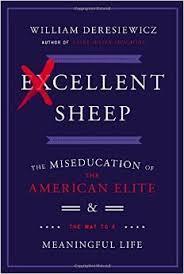 In��Excellent Sheep,��William Deresiewicz decries elitism that has become rampant in western society as it is demonstrated in university education. Deresiewicz��makes a call for universities to stop being run like corporate businesses, with constant concern about school ranking, exclusivity, fame and fortune��of alumni–and be operated instead by monks, or some similar group of ethically-minded individuals who are genuinely concerned about their students’ souls. When students are more focused on meeting admission requirements to get into prestigious institutions, they often continue their excellent jumping-through-hoops skills in college, taking more units and credits than make much sense, toward one of the four majors considered ideal (medicine, law, business, consulting). What is lost in this shuffle is a sense of what makes each of us who we truly are.
In��Excellent Sheep,��William Deresiewicz decries elitism that has become rampant in western society as it is demonstrated in university education. Deresiewicz��makes a call for universities to stop being run like corporate businesses, with constant concern about school ranking, exclusivity, fame and fortune��of alumni–and be operated instead by monks, or some similar group of ethically-minded individuals who are genuinely concerned about their students’ souls. When students are more focused on meeting admission requirements to get into prestigious institutions, they often continue their excellent jumping-through-hoops skills in college, taking more units and credits than make much sense, toward one of the four majors considered ideal (medicine, law, business, consulting). What is lost in this shuffle is a sense of what makes each of us who we truly are.
What we can learn from viewing how higher education can no longer be counted on for providing a crucible by which young people can discover how��their unique gifts can be recognized and appreciated for helping serve the common good–and realize that it’s not too late at any point to seek such spiritual awakening!��When you��know that leadership is more than seeking power and prestige,��and feel the difference between sincere compassionate involvement and greedy self-interest, you experience��a yearning to fill your life with people who truly care. This inner knowingness–this gut feeling–is a big step forward in daring to live a life less ordinary, contributing your verse of poetry to the world.
So let today be the beginning of a new way of living.
Carpe diem!
Seize the day!
The video version of this blog post can be found on YouTube at:��http://youtu.be/pqIELXDrr1s
______
Cynthia Sue Larson is the best-selling author of six books, including Quantum Jumps, Reality Shifts, Aura Advantage, High Energy Money, and Karen Kimball and the Dream Weaver’s Web, and the Aura Healing Meditations CD, but you’re just as likely to find her meditating or practicing martial arts as writing books.��Cynthia has been featured in numerous shows including the History Channel, Coast to Coast AM, and BBC. Learn how consciousness changes the physical world by subscribing to��her (free!) popular monthly ezine published at:��www.realityshifters.com

December 3, 2014
Cynthia Sue Larson Interviews Yasunori Nomura

Yasunori Nomura with Cynthia Sue Larson
I’ve been following Professor Yasunori Nomura‘s work this past year with tremendous interest, since he was one of the first theoretical physicists to publish a paper on the topic of the many worlds of quantum mechanics being one and the same as the eternally inflating multiverse. This perspective is one I consider to be extremely promising, both for its elegance and also for its ability to explain much that other theories cannot so easily address.
I was thrilled when attending a screening of the recent documentary film, “Particle Fever,” about the hunt for the Higgs boson to see Yasunori’s name up on the podium. I’d received an invitation to attend this UC Berkeley event through the Physics Department where I’d studied and received my degree many years ago. Dr.��Yasunori Nomura was one of the panelists who talked about what we’re learning from the hunt for the Higgs boson after the show, along with Lawrence Hall, Marjorie Shapiro, Walter Murch, Mark Levinson, Petr Horava, Beate Heinemann, and Surjeet Rajendran. Dr. Nomura is a Professor at UC Berkeley at the Berkeley Center for Theoretical Physics, where his work is primarily focused on particle physics and cosmology.
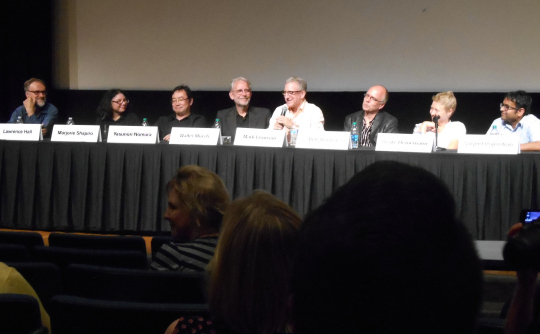
Panelists at “Particle Fever” screening at UC Berkeley, September 12, 2014
________________________
CYNTHIA: Thank you so very much for taking time from your busy schedule to answer a few questions! I also want to thank you for writing such a clear and persuasive paper in the Journal of High Energy Physics, “Physical Theories, Eternal Inflation, and Quantum Universe.” You’ve also developed a new theoretical framework to describe dynamics of quantum gravity in low energy regimes, preserving locality. What’s so wonderfully exciting about bringing these ideas together is that you are presenting us with a view of general relativistic global spacetime being an emerging classical concept that arises from a special relativistic, quantum mechanical description of quantum gravity. When these concepts are applied to the idea of the multiverse, we then have a multiverse with no beginning and no end, but rather time that emerges locally in branches. Is this a fairly good summary of your most current perspective? And in what new directions is your work going next?
YASUNORI: Yes, that is a good summary of my perspective. Our world is quantum mechanical. Quantum mechanics governs how nature works at the deepest level, not just in small subatomic scales but also at the largest scale of the eternally inflating multiverse. At the same time, quantum mechanics is a “weird theory” which predicts many counter-intuitive phenomena, and from which the “normal world” we perceive emerges only in a certain limit. This includes concepts such as space and time. Furthermore, quantum mechanics is an intrinsically probabilistic theory—every prediction you make is probabilistic. My current effort focuses on developing a deeper understanding of these issues. What is the detailed microscopic mechanism underlying the emergence of spacetime? What does the probability really mean? How does understanding of these issues help revealing the so-far elusive quantum theory of gravity?
CYNTHIA: I love the way you describe our world as being quantum mechanical at the deepest level! This conceptualization has not been popularly embraced, perhaps due to the counter-intuitive “weirdness” of quantum mechanics. You make excellent points about quantum mechanics being intrinsically probabilistic, and I appreciate your emphasis on the importance of better understanding what probability really means. In the introduction of your 2011 paper, “Quantum Mechanics, Spacetime Locality, and Gravity,” you point out that, “Quantum mechanics introduced the concept of probability to physics at the fundamental level. This has led to the issue of the quantum-to-classical transition, in particular the measurement problem.”�� What is needed for us to better understand probability in a quantum world?
YASUNORI: What the probability in quantum mechanics really means is a deep question, with which people have been struggling for a century. At the most naive level, it means that when we prepare an ensemble of a large number of systems all of which are in an identical state, then the records of performing physical measurements on these systems are distributed according to what quantum mechanics predicts. Does this mean that we simply do not know enough details of the systems, and if we do, then we can predict the outcome of measuring each member of the ensemble with certainty? People certainly wondered this possibility in early days in developing quantum mechanics, but we are now almost certain that this is not the case. In quantum mechanical world, the outcome of a measurement is intrinsically probabilistic—the probabilistic nature is not a manifestation of our incomplete knowledge of the system. A question then arises when we ask what happens if we make a “single” measurement on “a” system in our universe. According to quantum mechanics, the result is “probabilistic,” but what does that really mean? Where is the ensemble? Are there many universes which are “distributed” according to the prediction of quantum mechanics? This is where the necessity of considering many universes—or multiverse—comes in. We need to consider cosmology in a deepest sense to really address this problem.
CYNTHIA: This suggests there is a deeper interconnectedness that goes beyond any “single” measurement on “a” system that is occurring everywhere–and not just in the realm of quantum particles, because we cannot assume that any given experiment is closed off from its surrounding environment. We definitely require an understanding of probabilities beyond mere statistical frequencies, since we can’t run experiments on multiple versions of the universe! What are your thoughts about the value of the Bayesian interpretation of probability for quantum cosmology–the idea that before we start measuring probabilities, we must set initial assumptions about the probabilities?
YASUNORI: Yes, the issue is certainly relevant beyond the realm of quantum particles at small scales. Quantum effects are there even at large distances—they are simply hard to recognize for an observer like us living in “a branch” of a complete quantum state. We still do not know exactly what form the physical law that allows us to address this issue will take, but I can certainly imagine that some sort of Bayesian ways of thinking may play an important, and perhaps even crucial, role in formulating such a law. In fact, there are already several hints to move forward, based on consistency of quantum cosmology. (Another obvious clue is that the new rule must reduce to the standard Born rule in situations in which an ensemble is explicitly available to an observer.) Perhaps, explorations of this issue may lead to a new theory beyond quantum mechanics, not just reinterpretation (or reformulation) of the standard quantum mechanics.
CYNTHIA: Quantum cosmology is an especially exciting field right now, as it is becoming clear that multiverse theories can be modeled using computer simulations that can be compared to cosmic background radiation. When you envision a new theory beyond our current conceptualization of quantum mechanics, what ideas do you find most interesting now?
YASUNORI: Yes, quantum cosmology is an especially exciting field right now because of observational and theoretical evidence pointing to the multiverse, gathered in the last decade or two. We are, however, not at a stage in which we can simulate the multiverse as we do for cosmic background radiation. The problems we are struggling are still conceptual: what is the probability in the cosmological context, etc. I am, however, optimistic about near future progress. One idea which I think promising, and which I have been pursuing, is that “time” we perceive emerges only locally in relevant branches (e.g. in our own universe) in the static multiverse state. This would solve many conceptual issues such as what is the beginning or end of the multiverse.
CYNTHIA: Considering time to be more of a variable than a constant in the multiverse is fascinating and mind-bending. We now have measurements from our most accurate strontium atomic clocks showing that time elapses more slowly at lower altitudes, influenced by gravity, so a clock positioned just a few centimeters higher will read a different time. NIST’s chief timekeeper, Tom O’Brian, recently stated in an NPR interview that, “My own personal opinion is that time is a human construct.” Could you describe a little bit more about how might we envision time as being something we perceive locally in relevant branches of the multiverse–is there some way to visualize such a thing?
YASUNORI: What we call time is nothing more than (a very special form of) correlations between physical objects. Consider throwing a baseball. It is usually stated that the baseball then moves (relative to the earth) as “time passes.” What is really happening, however, is that the relative location between the baseball and the earth is correlated with configurations of other physical systems, e.g. the location of the hands of a clock, relative configurations of the Sun, Earth, and Moon (although their changes are minuscule in the timescale of the motion of the baseball), configurations of synapses in your brain, etc. To describe all these correlations, one may introduce some parameter “t” and write the configurations of the systems as functions of this “spurious” parameter t as we describe a curve in a two-dimensional plane using a parametric representation: (x(t), y(t)). This parameter t is precisely what we call time—it does not really “exist” as a physical object!
A real question then is why there exists such a special form of correlations between configurations of various physical systems, more specifically correlations that are described in a simple manner using a single spurious parameter t. This is what really must be explained, which my static quantum multiverse proposal is trying to address. Note that these special corrections (i.e. time) need not exist in all the branches of the multiverse state. We only know experimentally that they exist in the branches corresponding to our universe.
CYNTHIA: You point out that our conceptualization of infinitely large space that we associate with eternal inflation is really just an illusion, and a more accurate way to describe everything is that we exist within an intrinsically probabilistic multiverse. The vastness of eternally inflating space can thus be found in probability–in which an initial state evolves into a superposition of states, with branches occurring whenever bubble universes burst forth. In your “Static Quantum Multiverse” 2012 paper, you explain how the multiverse need not evolve in order to be consistent with an arrow of time–which presents a completely different picture of cosmology than the currently popular sense of infinitely large space. Within this static quantum multiverse, can you envision there being a place for subjective observation with its associated sense of past, present and future���so important to people, as Bernard d���Espagnat’s observes, ���Time is at the heart of all that is important to human beings.��� For example, when imagining ourselves throwing a baseball, is there anything we can identify as being ‘now’–the present moment?
YASUNORI: You correctly summarize that the vastness of eternally inflating space can be found in probability space. In a sense, the “Static Quantum Multiverse” proposal simply says that the vastness of time should also be found in the probability space. In this picture, the (static) multiverse state contains many “observers,” e.g. myself, at “different times,” each of whom has his/her own sense of past, present and future. In your example, each of these “observers” (which we usually describe as a single observer in different moments) has his/her own sense of now, with the baseball located in the place determined mostly by the Newtonian mechanics. I can’t affirm that the absence of the absolute notion of ‘now’ is not a problem, but I think it is not.
CYNTHIA: I appreciate how your static quantum multiverse model’s inclusion of probability space and time provides such an elegant view of the cosmos while allowing for free will and unique individual experience. Thank you for sharing some of your fascinating ideas and observations about quantum cosmology, time and space! In addition to reading your many publications–which number 111 to date, according to ResearchGate–how best can people follow your work and what you are doing?
YASUNORI: It is my pleasure. ResearchGate is one option. Another possibility is to use an author search in INSPIRE, the High Energy Physics information system built by CERN, DESY, Fermilab and SLAC: http://inspirehep.net/search?ln=en&ln=en&p=author%3AY.Nomura.1&of=hb&action_search=Search&sf=earliestdate&so=d&rm=&rg=250&sc=0/ I will also be updating my homepage: http://physics.berkeley.edu/people/faculty/yasunori-nomura/
��___________________________

Cynthia Sue Larson is the best-selling author of six books, including Quantum Jumps, Reality Shifts, Aura Advantage, High Energy Money, and Karen Kimball and the Dream Weaver’s Web, and the Aura Healing Meditations CD.��Cynthia has a degree in Physics from UC Berkeley, and she discusses consciousness and quantum physics on numerous shows including the History Channel, Coast to Coast AM, and BBC. You can subscribe to Cynthia���s free monthly ezine at: http://www.RealityShifters.com
RealityShifters��

November 25, 2014
How You Can Flourish with the Placebo Effect
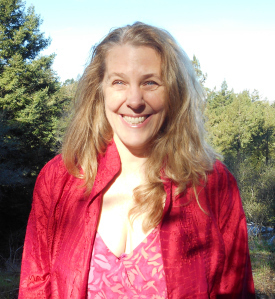
Cynthia Sue Larson
Do you remember when you skinned your knee as a child, and went to your Mom or caregiver who ���kissed it better���? In such situations, feeling better with no scientific explanation for why that might be can be attributed to your having experienced the ���placebo effect.���
The word ���placebo��� translates from the Latin to mean, ���I shall please,��� from placere, ���to please,��� and comes from a time in the Middle Ages when ���placebo��� referred to professional mourners-for-hire who sang at funeral masses, pretending to be the sorrowful bereaved.
The placebo effect was first recognized when anesthesiologist Henry Beecher reported successfully managing pain in injured soldiers after administering saline injections in place of morphine while working as a field physician for the Allies in World War II. Dr. Beecher watched a nurse give the saline injection to a patient complaining of excruciating pain prior to surgery, and was astonished to see how the patient showed little sign of pain or shock throughout the ensuing surgery. Dr. Beecher continued to repeat this placebo treatment of substituting salty injections for morphine, noting a high rate of positive responses.
Placebos are becoming an increasingly hot topic now, thanks to the way more and more people are experiencing positive placebo effects. Arthur Barsky, director of psychiatric research at Brigham and Women���s Hospital in Boston, notes, ���The placebo response was about twice as powerful than it was in the 1980s.��� Placebos have even been proven effective when people knew they were receiving the placebo���and not the real medicine. It helps when study administrators say things like, ���Do you know what a sugar pill is? A sugar pill is a pill with no medicine in it at all. I think this pill will help you as it has helped so many others. Are you willing to try this pill?��� This statement was part of a standardized script read to participants in a classic non-blind placebo study in which all participants experienced marked improvement in just one week.
97% of the family doctors recently surveyed acknowledged that they have given placebos to one or more of their patients, which proves that doctors depend upon the placebo���s effect���s impressive track record. Very few legitimate pharmaceutical prescriptions can match, let alone exceed the placebo���s astonishing successes, with between 35% to 75% of placebo recipients experiencing frequent, substantial, and in some cases lasting improvement from ailments ranging from arthritis to depression.
Randi McCabe, director of the Anxiety Treatment and Research Center at St. Joseph���s Healthcare in Ontario commented, ���Your belief that you���re going to get better, your attitude, does influence how you feel. And really, in cognitive behavior therapy, that is really what we���re trying to change: peoples��� beliefs, how they���re seeing their world, their perspective.��� David H. Rosmarin notes, ���Patients who had higher levels of belief in God demonstrated more effects of treatment. They seemed to get more bang for their buck.���
The placebo effect is successful for surgeries, too. In summer 1994, surgeon J. Bruce Moseley, team physician for the Houston Rockets, arranged a small-scale pilot study with middle-aged veterans. These volunteers were randomly assigned to one of three different groups: standard arthroscopic surgery (scraping and rinsing of the knee joints), rinsing of the knee joints with no scraping, and ���sham��� or placebo surgery. Dr. Moseley stabbed the placebo patients��� knees with a scalpel���and his behavior before, during, and after all three types of operations was identical. This was made easier by the fact that he���d only find out moments before the actual operation which type of procedure he���d be performing. Bruce Moseley had no expectation for positive results from the placebo surgery group; he was participating in the study because he was skeptical about the benefit of arthroscopic surgery to treat arthritis. Dr. Nelda Wray was in charge of health research at the Houston V.A., and asked Moseley how he could tell if those who improved from surgery weren���t benefiting primarily due to the placebo effect. Moseley was stunned by this question and responded, ���It can���t be. This is surgery we���re talking about.��� Dr. Wray replied, ���You���re all wrong. The bigger and more dramatic the patient perceives the intervention to be, the bigger the placebo effect. Big pills have more than small pills, injections have more than pills and surgery has the most of all.��� In this first study, the placebo worked like a charm. Even six months post operation, none of the patients knew which group they were in, and all ten men reported greatly reduced pain. The study was repeated, this time with 180 patients, and with similar results.
The astonishing efficacy of placebo surgeries is particularly striking in such studies as the ones reported in the New England Journal of Medicine involving arthroscopic knee surgery in 2002 and 2008. Positive improvements have been seen in 50% of study participants receiving placebo surgery for Parkinson���s disease, with most positive results associated with the most invasive placebo surgeries, and the most advanced cases of Parkinson���s disease. Numerous additional studies have shown phenomenal success of placebo treatments for everything from painting warts with brightly colored inert dye (with warts falling off when the color wore off); to doctors telling asthmatics they were inhaling a bronchiodilator when they weren���t; to fake ultrasound for post wisdom-tooth extraction patients relieving pain.
If placebos are so powerful, what do we know about how they work? Serious investigation into what makes placebos tick is just getting underway. The Harvard-affiliated Program in Placebo Studies and the Therapeutic Encounter (PiPS) in Boston, Massachusetts is the first multidisciplinary institute dedicated entirely to studying how the placebo effect works. Preliminary findings indicate a connection between the most successful placebo treatments and endorphins… yet endorphins don���t fully explain all the positive results placebos achieve. The methods of placebo administration are every bit as important as the administration itself.
The placebo effect is branching out to non-medical areas, as well, where we see indications of new ways we can positively transform our lives through changing our beliefs. Placebos have proven effective for helping students perform better on tests. Psychologists Ulrich Weger and Stephen Loughnan devised an experiment by which 40 undergraduate students were given a 20 question general knowledge test, with each question having four possible answers. Subjects were informed that before each question was asked, the correct answer would be momentarily flashed upon the screen too quickly for them to consciously recognize, but they were assured that the correct answer would register subconsciously in their brains. What was actually being flashed momentarily had nothing at all to do with the correct answers, but was instead a bit of gibberish consisting of random strings of letters. Participants who believed they���d subliminally received the correct answers and were given verbal guidance by experimenters, ���On some level, you already know the answer,��� scored significantly higher than participants in the control group who received no similar verbal guidance nor subliminal gibberish flashing on their computer screens. Clearly the best possible mantra or affirmation to tell oneself before approaching any test is, ���you know this.���
The video version of this blog post can be found on YouTube at:��http://youtu.be/uniypKdnEUs
______
Cynthia Sue Larson is the best-selling author of six books, including Quantum Jumps, Reality Shifts, Aura Advantage, High Energy Money, and Karen Kimball and the Dream Weaver’s Web, and the Aura Healing Meditations CD.��Cynthia has a degree in Physics from UC Berkeley, and she discusses consciousness and quantum physics on numerous shows including the History Channel, Coast to Coast AM, and BBC. You can subscribe to Cynthia���s free monthly ezine at: http://www.RealityShifters.com

October 18, 2014
How to See Your Aura in 4 Minutes
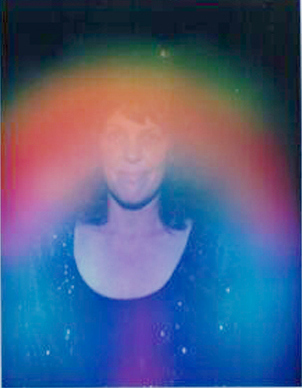
Cynthia Sue Larson
To those who can see it, the human aura looks and feels like a glowing, egg-shaped light that surrounds the human body. It is most pronounced around the head and shoulders, but extends outward for several inches (and sometimes several feet) from our heads down to our toes. Even if you can’t see the waves of energy that are burning brightly all around us, enveloping and connecting us to everything on Earth and throughout this universe, you can certainly feel them. Good physical, mental, and emotional health appears in the form of large auras that are full of bright colors, clear tones, and active patterns. When you start viewing your aura, you will see how its size varies from hour to hour, and day to day. You’ll notice how your life feels more vibrant on days when your aura is brighter and more challenging on days when you aura si dimmer. You’ll get insights into any tendencies you might have toward depression, being accident-prone, or illness… or be able to see the locations of infection. Healthy auras are colorful and fre e of dark areas, tears, breaks, holes, asymmetries, and other similar problems.
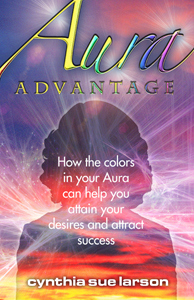 Edgar Cayce wrote in Auras: An Essay on the Meaning of Colors, “Ever since I can remember I have seen colors in connection with people. I do not remember a time when the human beings I encountered did not register on my retina with blues and greens and reds gently pouring from their heads and shoulders. It was a long time before I realized that other people did not see these colors. It was a long time before I heard the word aura, and learned to apply it to this phenomenon that to me was comonplace. I do not ever thingk of people except in in connection with their auras; I see them change in my friends and loved ones as time goes by–sickness, dejection, love, fulfillment–these are all reflected int he aura, and for me the aura is the weathervane of the soul. It shows which way the winds of destiny are blowing.”
Edgar Cayce wrote in Auras: An Essay on the Meaning of Colors, “Ever since I can remember I have seen colors in connection with people. I do not remember a time when the human beings I encountered did not register on my retina with blues and greens and reds gently pouring from their heads and shoulders. It was a long time before I realized that other people did not see these colors. It was a long time before I heard the word aura, and learned to apply it to this phenomenon that to me was comonplace. I do not ever thingk of people except in in connection with their auras; I see them change in my friends and loved ones as time goes by–sickness, dejection, love, fulfillment–these are all reflected int he aura, and for me the aura is the weathervane of the soul. It shows which way the winds of destiny are blowing.”
Your aura is the energetic boundary around you that defines your personal space. Notice how good it feels to sit under a tree or on the shore next to a body of water. Natural places that are ecologically balanced are full of energy that can help to equalize your own energy systems. This is why it feels so good to be out in nature! We humans are part of the intericatedly interconnected system of energy waves, and can heal and be healed by the energy systems around us. You can prove this to yourself the next time you feel hemmed in by the manmade world. Take a break from your usual routine and go to a natural setting where you can spend a little quality, quiet time. Once you arrive at this place, ask yourself, “How do I feel?” Regardless of what you do or don’t do, chances are very good that after you’ve spent twenty or thirty minutes in this natural setting, you’ll be feeling energized and your aura will be shining more brightly.
Exercise for Seeing Your Own Aura: Hands
1. Find a place where you can view your hands in natural or indirect light, with an off- white background. Paper or sheets of fabric do nicely, as do off-white colored walls.
2. Relax, breathe deeply and calmly, rest your eyes, and imagine yourself grounded to the center of the earth.
3. Gently stroke or tap your forehead between your eyebrows and hairline to stimulate the third eye chakra.
4. Extend one hand as comfortably as possible at arm’s length, and rest it in a comfortable position where it can stay in for several minutes.
5. Gaze at an imaginary spot located halfway between your index finger and thumb, keeping your vision focused exactly where you imagine that spot to be. By not looking directly at your fingers and adjusting your focus, you improve your chances of seeing your aura.
6. Remember one of the happiest days of your life, and how good you felt at the very best moment of that day. Continue gazing at that imaginary spot between your index finger and thumb, until you start to see the aura around your fingers.
7. Once you see your aura, notice what colors it has, and how it is distributed around your thumb, palm, and fingers. Is it even, or is it stronger in one place than another? Draw a sketch of what you see in a journal or notebook, using color pencils or crayons if you wish, and making note of how you were feeling at the time.
How did you like this exercise? This hand-viewing exercise is a great one to repeat often because it’s so simple to do, and you might find you can practice it when you are in a waiting room or any other time when you have a few extra minutes on your hands. I hope you took a few minutes to make a simple sketch of your aura, if you saw one this time. Keeping a record of what you observe is something that you’ll grow to appreciate as you start developing your auric viewing abilities and noticing differences in your aura. It’s fun to see how much easier aura viewing gets the more you do it!
You can watch me discuss this fast method for seeting your aura in just four minutes on my YouTube video at: http://youtu.be/1617z8K7lTo
Please feel free to comment with your thoughts and ideas here on this blog and in the comments under the video. I’d love to know how you feel!
______
 This article is excerpted with permission from Cynthia Sue Larson‘s best-selling book, Aura Advantage: How the Colors in Your Aura Can Help you Attain Your Desires and Attract Success
This article is excerpted with permission from Cynthia Sue Larson‘s best-selling book, Aura Advantage: How the Colors in Your Aura Can Help you Attain Your Desires and Attract Success
Cynthia Sue Larson is the best-selling author of six books, including Quantum Jumps, Reality Shifts, Aura Advantage, High Energy Money, and Karen Kimball and the Dream Weaver’s Web, and the Aura Healing Meditations CD, but you’re just as likely to find her meditating or practicing martial arts as writing books. Cynthia has been featured in numerous shows including the History Channel, Coast to Coast AM, and BBC. Learn how consciousness changes the physical world by subscribing to her (free!) popular monthly ezine published at: www.realityshifters.com


Your Senses Are a Mind���Body���Spirit Bridge

Cynthia Sue Larson
“The bridge between the body and the mind is provided by the senses, some of which are related more closely to the body, some to the mind. Because of this overlap, the senses have the potential to help the body and mind work together naturally. First, however, we must acknowledge our senses and experience them more deeply.” –��Tarthang Tulku
Integrating our mind, body, and senses reacquaints us with direct experience and brings us amazing perceptual acuity. We can heighten our sensory awareness to levels most��of us aren’t aware is possible. Certain tribes in Africa and South America can identify the position of Venus in daytime. A few hundred years ago, many sailors used Venus to navigate by whenever it was above the horizon, even during the day. Most people today would need some kind of shading or viewing tool to block the sunshine in order to find Venus in daylight, if they were even willing to attempt such a task.
Hyperacuity is our innate ability to feel heightened sensitivity to environmental stimuli. Researcher Eugene Marais showed that people under hypnosis can recognize differences between apparently identical pieces of blank paper, using minute differences such as small marks, creases, irregularities, and the position of the watermark, which would otherwise go unnoticed. Marais showed in a 1922 study how a hypnotized subject could easily distinguish between twenty apparently identical snail shells, or determine who had handled certain objects by a sense of smell alone. He devised similar experiments to show that humans have an amazing sense of direction, and this finding suggests that the homing instinct and sense of direction of animals is a natural facility that humans often suppress.
While humans may have developed intellect at the expense of sensory ability, we can recover sensory acuity. Some researchers document extraordinary cases of transposition of the senses, such as the cases Cesare Lombroso cited (1836-1909) of seeing through the skin of the ear and nose, and smelling through the chin and heel.
Many doctors are aware that High Sense Perception exists, since they use it! Some healers who feel comfortable using HSP in their diagnoses include: Barbara Brennan, W. Brugh Joy, Dr. Dolores Krieger, Dr. Shafica Karagulla, and Caroline Myss. Karagulla interviewed many medical professionals with HSP, including famous surgeons, professors of medicine, and heads of departments in large hospitals.
Perhaps part of the reason we don’t realize how sensory awareness can be heightened is that our senses are so often bombarded that we rarely notice we’ve lost some sensual acuity. We seldom take time to savor any particular sensory experience … to relish the way grass feels tickling under our bare feet, the way the surface of water feels in our bathtub when we stroke it from above with our palm, or the way our��food and drink tastes as we swallow it slowly and savor its subtle consistency, texture, temperature and flavor. It rarely occurs to us to delight in the way cold air pours out of the refrigerator onto our ankles and toes when we open the door, or the way we sigh quietly when we sit or lie down. We don’t need to lose our senses of smell, taste, touch, sight and hearing as we grow older … we can refine and develop our senses. Recovering sensitivity is a great way to feel fully alive. We can improve our sensitivity at any time in life by appreciating how keen our senses are, and intending that they improve.
An amazing example of someone who did the seemingly impossible by curing his blindness is Meir Schneider, who was born with a number of eye problems including: cataracts, glaucoma, small cornea, strabismus, astigmatism and nystagmus. After five unsuccessful surgeries, he was declared legally blind. At the age of sixteen, Meir began the Bates method vision exercises and gradually gained functional vision. He now has a current unrestricted California driver’s license, sees quite well, and teaches people to heal their bodies and improve their vision to the point that wearing glasses is unnecessary. The British writer Aldous Huxley also used Dr. Bates’s exercises to recover from a condition of near-blindness.
One of the biggest obstacles to overcome before we come to our senses is our belief that our eyes can never improve, or that presbyopia (or ‘middle-age farsightedness’) is an unavoidable result of aging. Neither of these beliefs need be true, and an insistence on believing in such limitations can certainly interfere with improving our sensitivity. Actually, one of the keys to improving your ability to see is simply to believe you can see, and relax. Many people notice their vision improves immediately. This has been dramatically proven to work with visual perception, and it may also work with other senses such as hearing, smell, taste, and touch.
The video version of this blog post can be found on YouTube at:��http://youtu.be/jSAM04oLxpM
______
 This article is excerpted from��Cynthia Sue Larson‘s�� best-selling book,��Reality Shifts, pages 159-161.
This article is excerpted from��Cynthia Sue Larson‘s�� best-selling book,��Reality Shifts, pages 159-161.
Cynthia Sue Larson is the best-selling author of six books, including Quantum Jumps, Reality Shifts, Aura Advantage, High Energy Money, and Karen Kimball and the Dream Weaver’s Web, and the Aura Healing Meditations CD, but you’re just as likely to find her meditating or practicing martial arts as writing books.��Cynthia has been featured in numerous shows including the History Channel, Coast to Coast AM, and BBC. Learn how consciousness changes the physical world by subscribing to��her (free!) popular monthly ezine published at:��www.realityshifters.com


Your Senses Are a Mind•Body•Spirit Bridge

Cynthia Sue Larson
“The bridge between the body and the mind is provided by the senses, some of which are related more closely to the body, some to the mind. Because of this overlap, the senses have the potential to help the body and mind work together naturally. First, however, we must acknowledge our senses and experience them more deeply.” – Tarthang Tulku
Integrating our mind, body, and senses reacquaints us with direct experience and brings us amazing perceptual acuity. We can heighten our sensory awareness to levels most of us aren’t aware is possible. Certain tribes in Africa and South America can identify the position of Venus in daytime. A few hundred years ago, many sailors used Venus to navigate by whenever it was above the horizon, even during the day. Most people today would need some kind of shading or viewing tool to block the sunshine in order to find Venus in daylight, if they were even willing to attempt such a task.
Hyperacuity is our innate ability to feel heightened sensitivity to environmental stimuli. Researcher Eugene Marais showed that people under hypnosis can recognize differences between apparently identical pieces of blank paper, using minute differences such as small marks, creases, irregularities, and the position of the watermark, which would otherwise go unnoticed. Marais showed in a 1922 study how a hypnotized subject could easily distinguish between twenty apparently identical snail shells, or determine who had handled certain objects by a sense of smell alone. He devised similar experiments to show that humans have an amazing sense of direction, and this finding suggests that the homing instinct and sense of direction of animals is a natural facility that humans often suppress.
While humans may have developed intellect at the expense of sensory ability, we can recover sensory acuity. Some researchers document extraordinary cases of transposition of the senses, such as the cases Cesare Lombroso cited (1836-1909) of seeing through the skin of the ear and nose, and smelling through the chin and heel.
Many doctors are aware that High Sense Perception exists, since they use it! Some healers who feel comfortable using HSP in their diagnoses include: Barbara Brennan, W. Brugh Joy, Dr. Dolores Krieger, Dr. Shafica Karagulla, and Caroline Myss. Karagulla interviewed many medical professionals with HSP, including famous surgeons, professors of medicine, and heads of departments in large hospitals.
Perhaps part of the reason we don’t realize how sensory awareness can be heightened is that our senses are so often bombarded that we rarely notice we’ve lost some sensual acuity. We seldom take time to savor any particular sensory experience … to relish the way grass feels tickling under our bare feet, the way the surface of water feels in our bathtub when we stroke it from above with our palm, or the way our food and drink tastes as we swallow it slowly and savor its subtle consistency, texture, temperature and flavor. It rarely occurs to us to delight in the way cold air pours out of the refrigerator onto our ankles and toes when we open the door, or the way we sigh quietly when we sit or lie down. We don’t need to lose our senses of smell, taste, touch, sight and hearing as we grow older … we can refine and develop our senses. Recovering sensitivity is a great way to feel fully alive. We can improve our sensitivity at any time in life by appreciating how keen our senses are, and intending that they improve.
An amazing example of someone who did the seemingly impossible by curing his blindness is Meir Schneider, who was born with a number of eye problems including: cataracts, glaucoma, small cornea, strabismus, astigmatism and nystagmus. After five unsuccessful surgeries, he was declared legally blind. At the age of sixteen, Meir began the Bates method vision exercises and gradually gained functional vision. He now has a current unrestricted California driver’s license, sees quite well, and teaches people to heal their bodies and improve their vision to the point that wearing glasses is unnecessary. The British writer Aldous Huxley also used Dr. Bates’s exercises to recover from a condition of near-blindness.
One of the biggest obstacles to overcome before we come to our senses is our belief that our eyes can never improve, or that presbyopia (or ‘middle-age farsightedness’) is an unavoidable result of aging. Neither of these beliefs need be true, and an insistence on believing in such limitations can certainly interfere with improving our sensitivity. Actually, one of the keys to improving your ability to see is simply to believe you can see, and relax. Many people notice their vision improves immediately. This has been dramatically proven to work with visual perception, and it may also work with other senses such as hearing, smell, taste, and touch.
The video version of this blog post can be found on YouTube at: http://youtu.be/jSAM04oLxpM
______
 This article is excerpted from Cynthia Sue Larson‘s best-selling book, Reality Shifts, pages 159-161.
This article is excerpted from Cynthia Sue Larson‘s best-selling book, Reality Shifts, pages 159-161.
Cynthia Sue Larson is the best-selling author of six books, including Quantum Jumps, Reality Shifts, Aura Advantage, High Energy Money, and Karen Kimball and the Dream Weaver’s Web, and the Aura Healing Meditations CD, but you’re just as likely to find her meditating or practicing martial arts as writing books. Cynthia has been featured in numerous shows including the History Channel, Coast to Coast AM, and BBC. Learn how consciousness changes the physical world by subscribing to her (free!) popular monthly ezine published at: www.realityshifters.com


September 17, 2014
Quantum Jumping Tip: You’re Bigger than Any Situation
“A new type of thinking is essential if mankind is to survive and move toward higher levels.” – Albert Einstein
As children, we intrinsically know the joy and value of going beyond ourselves, every time we get the chance to play. When children play, there’s an implicit understanding that all is happening in a spirit of good fun, and even when playing games with “good guys” and “bad guys,” there’s a sense that at the end of the day, regardless what happened in the game, everything’s just fine.
Children know they are much bigger than the games they are playing, so a fresh start is possible every day. This sense of wellbeing comes from the realization that as engaging as games can be, they are just games. We are bigger than any game, any problem, any situation. And in being bigger, we can see solutions to problems from a bigger-picture point of view.
One technique that is a regular part of my most successful experiences with reality shifts and quantum jumps is remembering that awareness is always larger than any given situation–that through remembering this, and through identifying with being awareness, solutions always present themselves naturally. You can see illustrations of what this kind of topography looks like if you read theoretical physics papers written by Yasunori Nomura and Raphael Bousso with Leonard Susskind, showing how the Many Worlds of the quantum realm are one and the same as the expanding multiverse. When we expand our awareness to observe larger areas, we are capable of interacting in a more expansive way that recognizes positive opportunities we are entangled with through the many possible worlds.
This tip for improving your reality shifting and quantum jumping experiences is a meditation in three parts: (1) Breathe to your lower abdomen while feeling joyful enthusiasm, (2) Imagine that your true identity is Awareness that has access to all possible realities, (3) Feel, trust and playfully follow gut feelings and intuition as they arise.
(1) Breathe to your lower abdomen with joyful enthusiasm
Start this meditation by taking slow, deep, steady breaths to your lower abdomen. Close your eyes and smile softly while slowing your breath down to the slowest natural rate you can reach that accommodates full and complete inhalations and exhalations. Relax, and intend that you invite joyful enthusiasm into this moment.
(2) Imagine Your True Identity is Awareness
Imagine that your true self is awareness–the awareness who can recognize how you are feeling and what you are thinking right now, for example. This awareness enables you to enlarge your frame of experience through nondualistic meditative processes, so you can experience firsthand that you are always larger than whatever concerns you have. In this moment, right here and right now, everything is just fine. Intend that you are now experiencing a sense of being more than any dichotomy or category that your rational, analytical mind can label, and rather a sense of awareness that exists always and everywhere.
(3) Feel, trust, and playfully follow gut feelings and intuition
You can now access a state of being-ness in which you feel inspired to be in the right place at the right time, doing what feels best. Allowing yourself to trust this inner knowingness can guide you to experience some of the most extraordinary experiences in your life, so you can feel like you are living in a waking dream. This kind of experience is one of doing what feels right to do in this moment, and living each moment of the day in this way. This is the state of consciousness I describe in my book, Reality Shifts, as Lucid Living, and it’s available and possible for us all. From such a state of consciousness, we have the ability to transcend limitations that we may have presumed to be walls or barriers in our lives.Staying in the present moment, feeling what feels most joyful and beneficial, and being at one with that feeling provides the setting for experiencing the greatest, most satisfying coincidences, synchronicity, miracles and extraordinary events.
The video version of this blog post can be found on YouTube at: http://youtu.be/6OrbQ10nc1Q
______
Cynthia Sue Larson is the best-selling author of six books, including Quantum Jumps, Reality Shifts, Aura Advantage, High Energy Money, and Karen Kimball and the Dream Weaver’s Web, and the Aura Healing Meditations CD, but you’re just as likely to find her meditating or practicing martial arts as writing books. Cynthia has been featured in numerous shows including the History Channel, Coast to Coast AM, and BBC. Learn how consciousness changes the physical world by subscribing to her (free!) popular monthly ezine published at: www.realityshifters.com


Top 5 Quantum Jumping Myths — Busted!
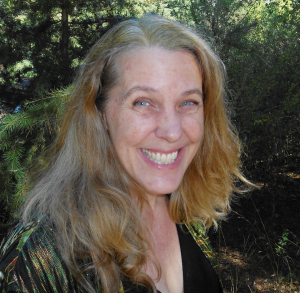 Gauging by some of the comments and questions I hear about reality shifts and quantum jumps, there is a fair bit of confusion about exactly what might be in store for someone contemplating making a quantum jump. Some recent reviews posted for Quantum Jumps at amazon indicate there are some pretty big misunderstandings about what it’s all about. Let’s take a look at the top myths about quantum jumps, and get some clarification about what’s going on.
Gauging by some of the comments and questions I hear about reality shifts and quantum jumps, there is a fair bit of confusion about exactly what might be in store for someone contemplating making a quantum jump. Some recent reviews posted for Quantum Jumps at amazon indicate there are some pretty big misunderstandings about what it’s all about. Let’s take a look at the top myths about quantum jumps, and get some clarification about what’s going on.
MYTH #1: Quantum Jumps Only Occur in the Quantum Realm
This misconception apparently comes about from the belief by some that the phrase “quantum jump” has been misappropriated, and resides only in the domain of quantum physics. As with many phrases in the English language, including many scientific concepts, what starts out meaning only one thing can often end up meaning much more. Some concepts are much more central than others, and can thus be expected to be encountered far beyond where they were originally intended. Dr. Warren Nagourney of the University of Washington described the palpable excitement felt by the teams of physicists who first witnessed quantum jumps with their own eyes,
“You have to hold yourself steady and look for minutes at a time, and then you’ll see it switch. You see the trapped ion blinking on and off, and each blink is a quantum jump. It’s a striking illustration that things occur discontinuously in nature.”
While it’s true that in 1986 when the above observations were made, the quantum jumps being referred to were only those of quantum particles, there has been progress since then in terms of increasing numbers of physicists coming around to believe, as growing numbers of physicists including UC Berkeley University’s Raphael Bousso and Stanford University’s Leonard Susskind assert in their 2011 paper published in High Energy Physics,
“… the many worlds of quantum mechanics and the many worlds of the multiverse are the same thing, and that the multiverse is necessary to give exact operational meaning to probabilistic predictions from quantum mechanics.”
MYTH #2: The Multiverse is an Unprovable Theory, and therefore Not Scientific
Very recently a method was devised by which the idea that the multiverse could be tested, using mathematical models that show what we would expect to find in our universe if bubble universes collided. Being able to prove or disprove a theory is essential in order for a theory to be considered scientific, so it’s big news that we will soon know what to look for astronomically that matches what computer models will show us we’ll expect to see when bubble universes in the multiverse crash into one another. Perimeter Institute’s Matthew Johnson is creating a computer simulation of our universe, which he says, “is easy.” Thanks to computer simulations, it’s now possible to rule out certain models of the multiverse, so if we are living in a bubble universe, there is a chance we might be able to confirm this is actually so.
MYTH #3: Quantum Jumps Encourage Unethical Identity Theft
There is a concern that some people have that if many possible versions of you and many possible versions of me exist in the multiverse, then messing around with other possible realities is just looking for trouble, and we should keep to our own universe without engaging with others, thank you very much. I would not have even known about this concern, had it not been brought to my attention by an alert book reviewer at amazon, who voices a concern that my book, Quantum Jumps, is a how-to guide for cosmic identity theft. If you’re having trouble following what this reader is concerned about, they summarize the concern as, “If you are immoral enough to destroy another person’s life to benefit your own, then be aware that it could be YOUR life being screwed up by a version of yourself who is better at quantum jumping.” The best way to straighten out this misunderstanding is to return to physics papers written by UC Berkeley University’s Yasunori Nomura, and also by Raphael Bousso and Leonard Susskind. The key concept is that while growing numbers of eminent physicists are coming to agreement that it looks quite likely that the many worlds of quantum physics are one and the same as the multiverse, the way this comes into being is a matter of probabilities. Put more simply, when you make a jump to another reality, you are not messing up someone else’s life by giving them a worse state of affairs so much as you are experiencing a different path down the decision tree of your life, based on new information.
MYTH #4: You Might Get Trapped in an Alternate Universe
Fears of becoming trapped in some alternate universe without any way to return home are unfounded, based on all reports I’ve so far heard from people who have experienced remarkable shifts in reality. The idea of “home” in a multiverse that exists in probability space actually implies that we are physically experiencing one particular universe amongst multitudes of possible universes, much the same way that while you might imagine many possible travel routes to get from one place to another, you only physically experience one.
MYTH #5: If You Don’t See Instant Results, Quantum Jumps Don’t Work
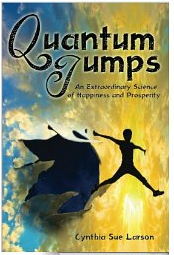 Mastering quantum jumping abilities at a level of proficiency some people expect immediately creates unrealistic expectations. There are skills involved, some of which require a body of prior practice and experience. Just as you wouldn’t expect to be able to be an award-winning chef after taking cooking lessons for a month, or be able to play first violin with the London Symphony Orchestra after a few weeks of training. Mastering the art of quantum jumping requires developing skills in honing your internal energy, or Qi; clearing your energy body of blockages and fears; and moving into a state of being-doing-awareness that is very different than the typical left-brain thinking based on categories and labels that is so prevalent in the western way of thinking and living.
Mastering quantum jumping abilities at a level of proficiency some people expect immediately creates unrealistic expectations. There are skills involved, some of which require a body of prior practice and experience. Just as you wouldn’t expect to be able to be an award-winning chef after taking cooking lessons for a month, or be able to play first violin with the London Symphony Orchestra after a few weeks of training. Mastering the art of quantum jumping requires developing skills in honing your internal energy, or Qi; clearing your energy body of blockages and fears; and moving into a state of being-doing-awareness that is very different than the typical left-brain thinking based on categories and labels that is so prevalent in the western way of thinking and living.
The video version of this blog post can be found on YouTube at: http://youtu.be/Fz8C6tmXgCk
______
Cynthia Sue Larson is the best-selling author of six books, including Quantum Jumps, Reality Shifts, Aura Advantage, High Energy Money, and Karen Kimball and the Dream Weaver’s Web, and the Aura Healing Meditations CD, but you’re just as likely to find her meditating or practicing martial arts as writing books. Cynthia has been featured in numerous shows including the History Channel, Coast to Coast AM, and BBC. Learn how consciousness changes the physical world by subscribing to her (free!) popular monthly ezine published at: www.realityshifters.com



